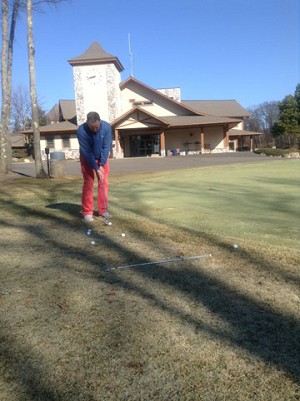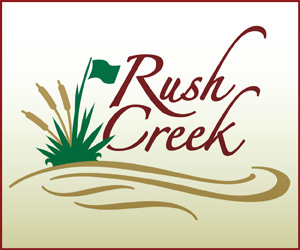Mastering The Chip Shot
By Chris Foley
Golf is one of the few games that is not practiced on the actual field of play. Games like football, basketball, tennis, and hockey are all practiced on the court, rink or field where the game is actually played. Unfortunately, in golf, the majority of our practice occurs at a driving range. Most of the time the driving range has no resemblance to the golf course. This environment typically doesn’t lead to great performance on the golf course.
This golf season in each issue of Tee Times, we will present a practice plan, drill, or game that is designed to help you create a great practice situation and help you practice for performance.
Practicing for performance must include the following elements.
1. The drill, game, or exercise needs to create awareness and be engaging. Things like changing targets frequently, creating different sensations or feels, and pushing you out of your comfort zone
2. The practice needs to be measurable. When we measure our practice, it gives us a true gage of how we are doing. From day to day we can track improvement or regression.
3. There needs to be consequence in practice. We need to compete while we practice. This is what truly bridges the gap between the range and the golf course. The practice experience needs to be closer to the actual golf course experience.
The short game is the area of the game that takes the most time to get back after a long winter. Most players tend to struggle more with partial swings where we are more reliant on our scenes of feel and touch.
Try the following exercise to regain and improve your chipping.
• Go to the practice green with six golf balls. Standing five to ten paces off the green, take the balls and throw them up so they scatter into a variety of lies.
• Play each ball as it lies and chip each to a different hole on the green. If your green only has a couple of holes, don’t chip to the same hole more than one time in a row.
• If you chip in, you get three points. A ball within a putter length of the hole is two points. A chip within two putter lengths is one point and outside of that range is minus one.
• Track your points and take the balls to a different side of the green. Repeat this process three times for a total of 18 chip shots. Record your total score for the 18 chips and track your progress each practice session.
To add an element of competition to this exercise, practice with a friend. Use one ball, your chipping clubs, and your putter. Choose a spot to hit the first chip. Each person will chip to the selected hole and then putt out. A chip in is worth three points and an up and down worth one. Alternate who chooses the next place to chip from and play 18 holes. The player with the most points wins!
Investing some time in this exercise over the next 30-45 days will have a significant impact on you chipping and lower your scores.






























